A note from Siofra
Well, hello my lovely folky friends. I hope you are all having a grand month so far. You probably get sick of us saying this, but it’s been another super busy month for Stacia and me. Since our last catch-up we’ve:
Been to Blickling to see if we could spot Anne Boleyn. I didn’t share any of that because we didn’t see anything, and it was pitch black so I didn’t get any pictures
Had a visit from the absolutely wonderful Lunatraktors. Honestly, if you get a chance you have to go and see them. We were all absolutely entranced by them
Been interviewed by degree students for their dissertations
Sold out our upcoming live podcast at The Holloway. We are in full research mode for that one
Launched tickets for our next collaboration with Reel Connections. We’ve been invited to do an introduction for the Norwich History Festival showing of Witchfinder General at Cinema City in July. You can get tickets HERE if you fancy joining us.
We’ve been on BBC Radio Norfolk to talk about folklore
And finally, we’ve been planning something big…and when I say big, I mean literally huge. Since February we’ve been quietly working with a group of friends to create some MASSIVE puppets for the Bungay Black Shuck Festival parade. None of us have ever done anything like this before so it’s been a learning curve. But we all have different skills which is making the process a lot easier than we were expecting, and we are having a lot of fun!
So meet the team! Chloe, Matt, Dee, Simon, Hayley, Ian, me, and Mae. With assistance from Peanut and Penny (and sometimes Clive). Our puppets are Jack Valentine, The Lantern Man, and The Sheringham Mermaid.



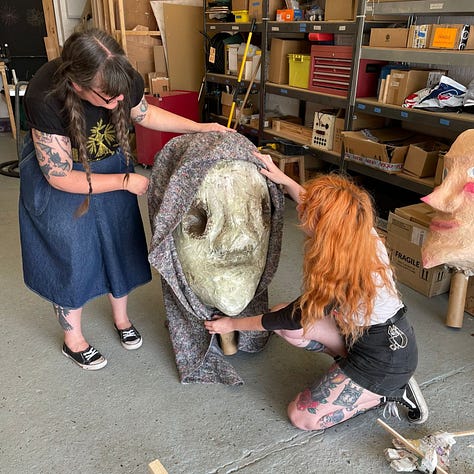

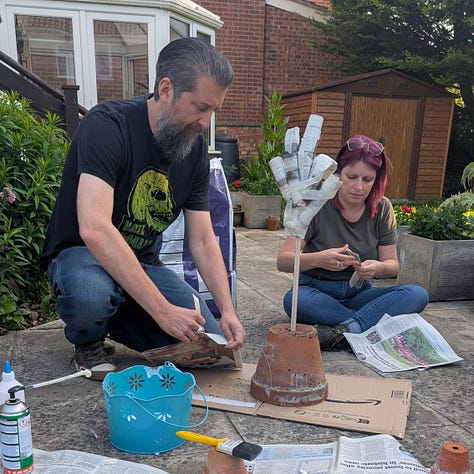
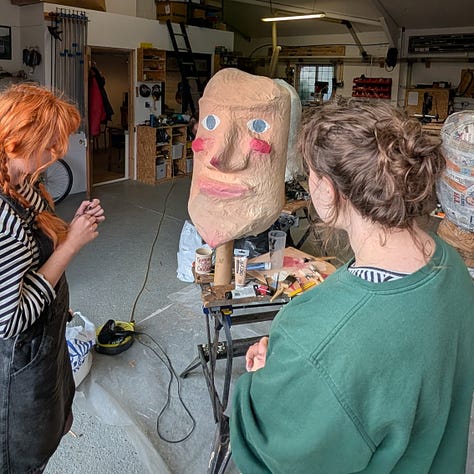


We’ll keep you updated on our progress. We’ll probably need some extra hands in the parade so keep an eye out for our volunteer call out.
Siofra 💚
A note from Stacia
This year is melting away like a lolly in the sun – I can’t believe we’re almost at the longest day of the year and that in just a few weeks’ time we will begin the journey to the darker half of the year. It’s been a busy month with lots of planning and plotting at Norfolk Folklore Society Towers. We will share more soon.
A small admin note: PLEASE hit the ‘like’ button on our Substack (actually, on ALL our) posts and share them with your friends to help us grow. It means a lot to know that what we do is appreciated, especially as we have held off going down the ‘paid-for’ route to make Norfolk Folklore Society as accessible as possible. A huge amount of love and hard work goes into what we do and we’d love to know that you’re out there, enjoying it! Thank you.
This month’s newsletter has a distinctly fragrant theme – as the lavender takes over the fields of West Norfolk, we’re looking at the folklore of lavender, a recipe for lavender lemonade and a ghost that smells of lavender in Norwich! We’re also introducing a new series called Hidden in Plain Sight – these are sites which you may well walk past daily, but which hide amazing stories. First up is a grisly secret just off Magdalen Street in Norwich. Have a magical Midsummer,
Love, Stacia x
Lavender folklore: the scent of love, luck and legends
Few herbs have been as cherished through the ages as lavender, and here in Norfolk, we’ve been famous for our fields of purple haze for nearly 2,000 years.
Its name may stem from the Latin lavare, “to wash”, in reference to the Romans’ fondness for scented baths, but others argue it derives from livendula, meaning bluish. Either way, lavender has long held an esteemed place in herb gardens, medicine chests, and magical traditions, especially here in Britain.
Though often associated with the English countryside, lavender is not native to our shores, originally thriving in the sun-baked hills of the Mediterranean. It reached Britain via Roman conquests and trade routes, and by the Middle Ages, it had become a staple of monastic physic gardens. Lavender water, prescribed by the likes of Hildegard von Bingen, was used to ease headaches and soothe the nerves.
Medieval washerwomen, known as “lavenders”, would dry linens on lavender bushes, imbuing them with its calming scent. In plague years, it was tied in bunches to wrists or hung in nosegays to ward off infection—likely thanks to its insect-repelling properties. Grave robbers famously relied on a potion called Four Thieves Vinegar, steeped with lavender, to protect themselves from disease.
Lavender’s magical reputation is just as fragrant. In Tudor times, girls would sip lavender tea on St Luke’s Day and chant:
“St Luke, St Luke, be kind to me,
In my dreams, let my true love see.”
In the same era, “Lavender’s Blue” emerged as a love song, echoing the herb’s connection to romance and desire. Sprigs were tucked under pillows to inspire dreams of future husbands, or placed beneath the marital mattress to keep passion alive. Some believed lavender guarded a maiden’s virtue; others, like working women in brothels, wore it to protect themselves and draw in custom.
Used in midsummer rituals alongside St John’s Wort, lavender was burned in bonfires to banish evil spirits. Crosses made from lavender were hung above doors to keep misfortune out, and it’s said that inhaling its scent may allow one to glimpse spirits.
Whether warding off pests, illness or heartache, lavender remains a flower of balance: calming and rousing, sacred and sensual, medicinal and magical. No wonder it still casts a spell.
Theatre group The Whiting’s on the Wall need some help!
The theatre group are looking for a woman with a Norfolk accent willing to be audio recorded telling a local folktale.
The audio will be used to create a transcript which will feed into the play script of their latest show ‘LoreFolk’ touring East Anglia this Autumn.
They aren’t looking for experts…all the interviewees are local folk sharing their thoughts, feelings and piecemeal rememberings of local and family folklore.
Contact details are below if you are able to help.
Facebook/Instagram DM @ thethewhitingsonthewall
The Countess in the moat: the ghosts and secrets of Oxburgh Hall
Oxburgh Hall is a house built to keep its secrets.
Moated, fortified, and filled with centuries of devotion, betrayal, and longing, it still whispers with the lives of those who walked its polished floors and paced its shadowed corridors - and one of them, it seems, never left.
Completed in 1482 for Sir Edmund Bedingfield as the Wars of the Roses drew to a bloody close, Oxburgh was always more than a family seat: it was a stronghold of faith, loyalty, and quiet defiance.
The Bedingfields would hold fast to their Catholicism through Tudor turmoil and into dangerous Elizabethan days, turning their home into a hidden place of worship - mass was signalled with laundry hung on a hedge, and a priest hole beneath a toilet kept clerics from the scaffold.
Royalty came and went; Henry VII stayed with Elizabeth of York and Margaret Beaufort—but it is a less celebrated guest who continues to walk the halls. She drifts through the north wing, where the ancient towers rise, silent as the mist that rolls across the moat.
The National Trust speaks of a jilted lover - a Countess of Italy - said to have leapt from a bedroom window to the waters below, her sorrow soaking the stones forever after. She is seen still, pale and stately in Tudor dress, gliding along the north staircase or crossing the grounds when no costumed volunteers are on duty. Unexplained chills often follow in her wake.
Others claim she was a Spanish visitor, heavily pregnant, who vanished within Oxburgh’s walls in the 1500s, never to be seen again: at least, not among the living.
A portrait within the hall’s collection stirs further speculation. Catalogued as An Unknown Lady aged 23, the 1571 painting shows a beautiful woman with a solemn gaze and regal bearing, dressed in white and gold with a delicate crown upon her brow.
Once thought to be Spanish, the work is now believed to depict an Italian noblewoman. Some say she is Camilla Martelli, mistress-turned-wife of Cosimo de’ Medici, whose scandalous marriage ended with her exile to a convent. There is no evidence she ever came to Norfolk, and yet...
In 2020, more than 2,000 artefacts were discovered beneath the floorboards during re-roofing works: hidden manuscripts, fragments of clothing, musical scores, and prayer books: all evidence of the Bedingfields’ secret Catholic rites. Among them, a piece from a 1590 edition of a Spanish story first penned in 1420 - a story of longing, loyalty, and loss.
In 2016, a visitor to Oxburgh captured a photograph of a cloaked woman standing on the bridge and shared it with a national paper. A psychic, Ian Griffiths, examined the image and said his guide confirmed a spirit presence: a young woman, beautiful, heavily pregnant, drowned under strange circumstances.
Her father, he claimed, once worked with the King’s horses. She has also been seen on the stairs inside the hall.
Whether Countess, courtesan, or cloistered ghost, the woman in the moat keeps her silence. But in the cold spots, in the trick of the light on the water, in the echoes of footsteps in empty rooms, her story still finds a way to be told.
Lavender Lemonade
Serves: 6
Prep time: 20 minutes
Total time: 20 minutes (plus steeping time, if needed)
Ingredients:
1 tablespoon dried culinary lavender (or a small handful of fresh, unsprayed lavender flowers)
200g caster sugar
500ml just-boiled water
300ml freshly squeezed lemon juice (around 5 to 6 lemons)
500ml cold water (plus more to taste)
Ice, to serve
Lemon slices and a few sprigs of fresh lavender, for garnish (optional)
Method:
Infuse the lavender: Place the lavender and sugar in a heatproof bowl. Pour over the boiling water and stir until the sugar dissolves. Leave to steep for 15 to 20 minutes.
Strain: Pass the mixture through a fine sieve to remove the flowers, then discard them.
Mix the lemonade: Stir in the lemon juice and cold water. Taste and adjust with more water or sugar if needed, depending on how tart your lemons are.
Chill and serve: Pour over ice into glasses or a jug. Garnish with lemon slices and a sprig of lavender for a little floral flourish.
Tip: Use English lavender (Lavandula angustifolia) for the best flavour—other types can taste bitter or soapy. Avoid florist-bought flowers, which may have been treated with chemicals.
The Lavender Lady of The Maids Head
One of Norwich’s oldest surviving hotels, The Maids Head has been welcoming visitors to the city for centuries: and some of them, it seems, have never truly checked out.
With parts of the building dating back to the 13th century and guests that once included Katherine of Aragon, Queen Elizabeth I, and the Black Prince, the hotel is steeped in history; and, some say, scented with it too.

Among the ghost stories shared by guests and staff alike, one of the most enduring is that of a woman in grey who is said to gently drift through the building’s oldest parts, accompanied by a sudden and unmistakable scent of lavender.
Even those who have never laid eyes on her have reported being enveloped by the strong floral aroma, said to mark her quiet passage along a corridor or into a room. It’s a haunting not of cold chills and screams, but of a perfume bottle uncorked somewhere just out of sight.
The identity of the Lavender Lady is unknown, but her presence is often described as calming: more kind companion than vengeful spirit.
Of course, it’s possible that what guests are experiencing isn’t the spectral trace of a centuries-old guest, but the very earthly effects of a particularly enthusiastic housekeeping spray.
Still, it’s comforting to think that even in the afterlife, some souls choose to waft through the world gently, wrapped in the soft scent of bygone days… and perhaps a slightly overzealous plug-in diffuser.
A new series: Hidden in plain sight
Norwich’s car park of the condemned
There is nothing remarkable about the car park behind Magdalen Street’s shops. Nothing, that is, unless you know what lies beneath.
Between the rows of parked cars, a medieval secret lingers.
This unassuming spot is Throckmorton Yard, the former resting place of the hanged. Beneath the tarmac lies the lost church of St Margaret in Combusto, known chillingly as St Margaret ubi sepeliunter suspense: “St Margaret where those who have been hanged are buried.”
The gallows once stood just outside Norwich’s Magdalen Gates, the remains of which can be seen at the junction of Magdalen Street and Magpie Road.
Those cut down from the rope were brought here, their souls unshriven, their bodies unblessed: felons, transgressors, perhaps victims of a brutal legal system.
Burials began here in the late 11th or early 12th century and continued until 1468, when the church was declared redundant.
When development loomed in the 1980s, archaeologists excavated the ground and uncovered a mass of the forgotten dead.
A staggering 436 skeletons were unearthed, a disproportionate number of them male. Some had been interred face down, a rare and unsettling practice in Christian burials, perhaps marking them as damned, cursed, or simply different.
The findings suggest that many of those buried here were executed criminals, granted no memorial and quickly forgotten.
The average height of the men was 5ft 6in; many were young adults - their stories, like the church that held them, vanished from the cityscape.
Today, nothing marks their presence but the slight dip of a car wheel in a pothole, the scrape of tyres where once mourners may have wept - or jeered.
Norwich is a city stitched with hidden histories. In Throckmorton Yard, the dead once lay just inches beneath your shoes.
So next time you pass this unassuming yard on Magdalen Street (unless you remember the glory days of The Jacquard club and fancy you can hear The Clash’s Rock the Kasbah ending another night of punk perfection), pause. Look.
You are standing in the shadow of the gallows, on the edge of history - and perhaps something else entirely.








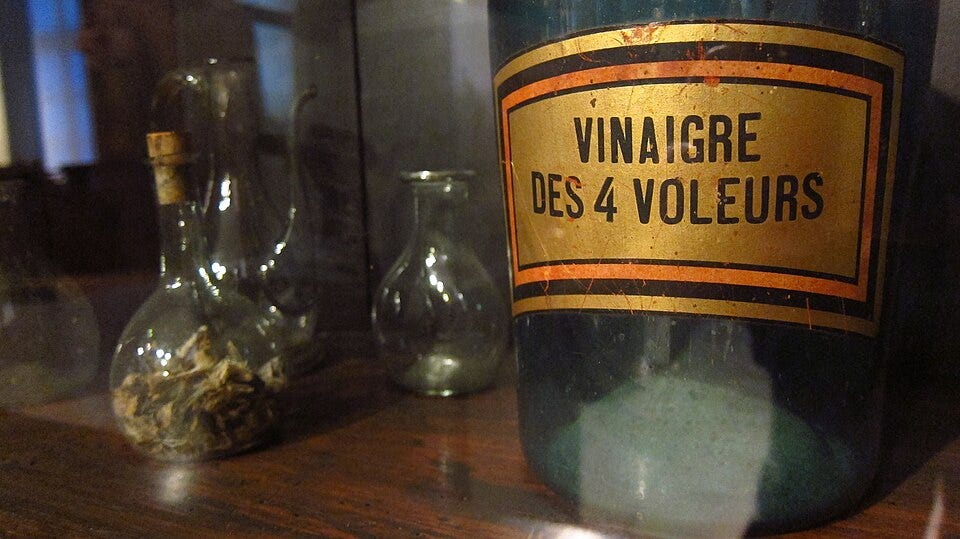
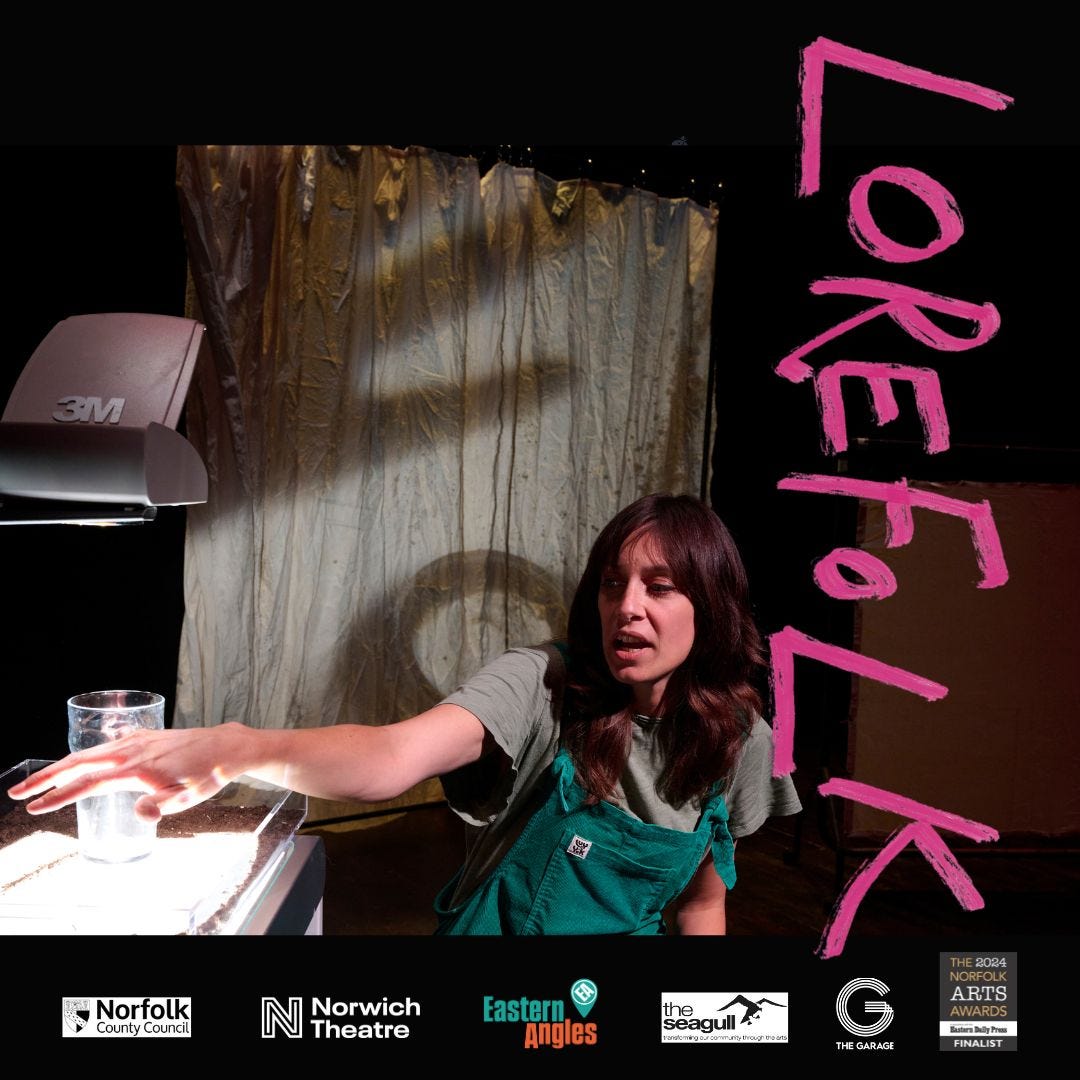

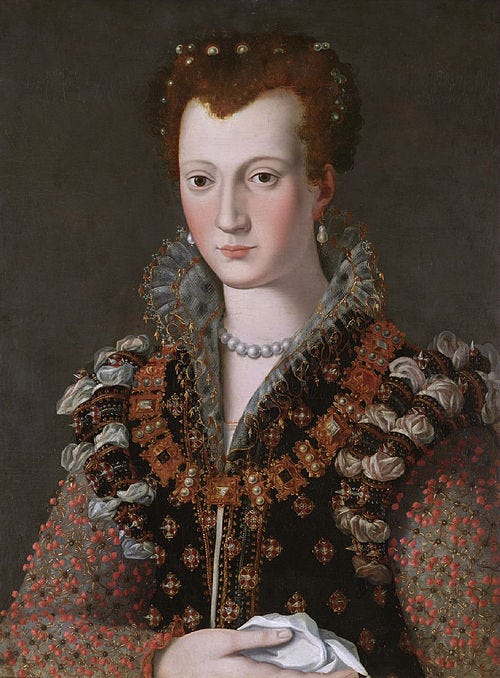
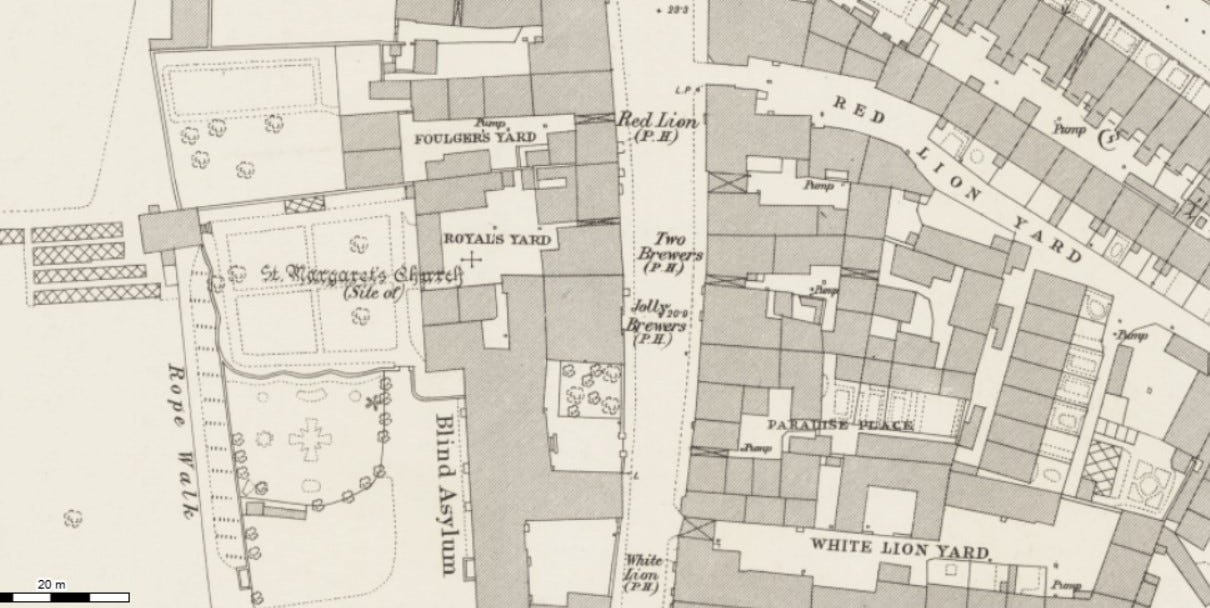
I always like the posts but I will now make sure to “like” the posts!
Fascinating. I’m going in search of the gates. Sadly, I will miss black shuck this year as I’m away but being a Bungay resident this is the one time of year we feel we own something ☺️